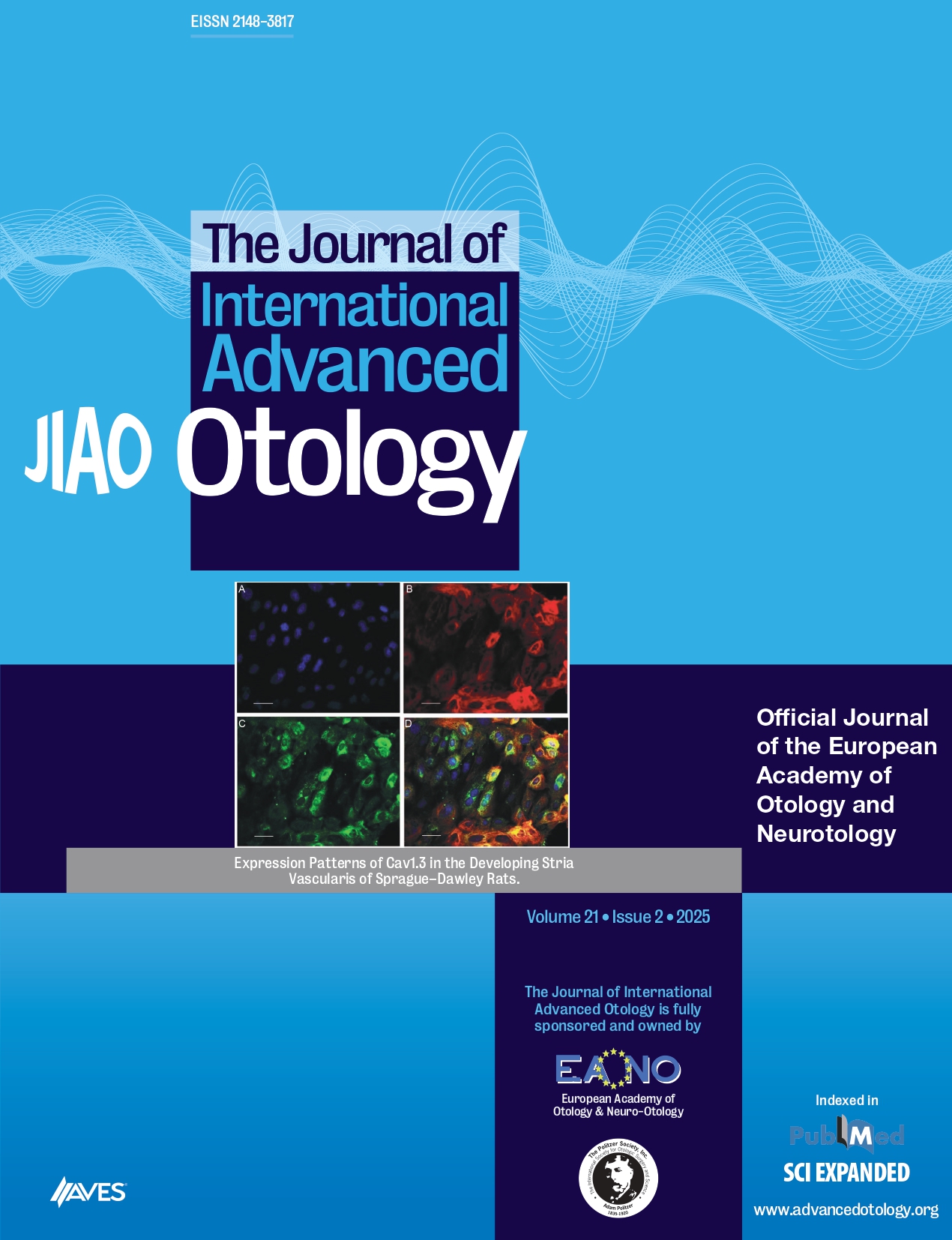Progressive Ototoxicity of Baby Shampoo As An Antifog Agent: An Experimental Study
Main Article Content
Abstract
Background: Endoscopes play an important role in otologic surgery. Baby shampoos, known for their hypoallergenic, anti-irritant, and antifogging properties, are increasingly being used. The purpose of this study was to evaluate the safety and ototoxic effects of baby shampoo in an
animal model using both electrophysiological and histological methods.
Methods: Twenty-eight male Sprague–Dawley rats were divided into 4 groups: 7 control (group 1), 7 saline (group 2), 7 isopropyl alcohol
(70%)+chlorhexidine (2%) antiseptic (group 3), and 7 baby shampoo (group 4). Baseline hearing was assessed by auditory brainstem response
(ABR). All groups except the control received 3 doses of their respective substances by intratympanic injection. Auditory brainstem response
measurements were performed on day 7 and day 21, after which the temporal bones were dissected. Histological evaluation of the cochlea and
vascular endothelial growth factor (VEGF) immunoreactivity studies were performed.
Results: Baseline hearing thresholds were similar and within normal limits. On days 7 and 21, hearing thresholds were significantly impaired
at all frequencies in the experimental groups. In particular, groups 3 and 4 had higher thresholds than the other groups. Baby shampoo caused
significant damage to outer hair cells and sustentacular cells and decreased VEGF immunoreactivity in the stria vascularis, spiral ligament, and
organ of Corti.
Conclusion: Baby shampoo was found to progressively impair hearing over time, indicating its potential to cause long-term ototoxicity.
Cite this article as: Mutlu A, Bakici B, Yasemin Gunduz A, et al. Progressive ototoxicity of baby shampoo as an antifog agent: an experimental
study. J Int Adv Otol. 2025, 21(2), 1526, doi: 10.5152/iao.2025.241526.


